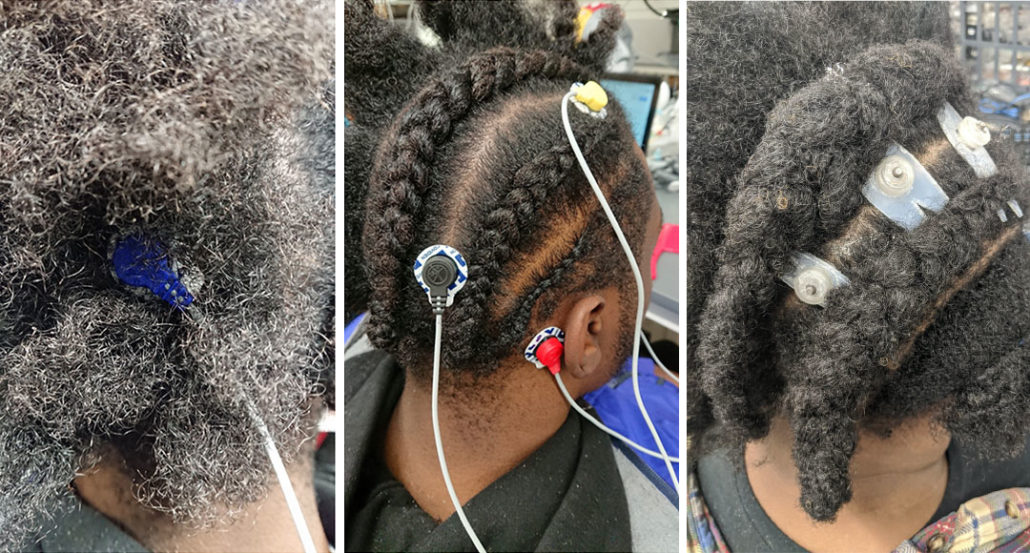
Não há características únicas no EEG ou EEG quantitativo (EEGq) de pacientes com TCE leve. O EEG após o TCE mostra lentificação do ritmo posterior dominante e aumento difuso da atividade lenta teta, o que pode ser revertido dentro de horas ou semanas. Foram encontrados 460 artigos, analisados 52 e selecionados 13 artigos. As palavras-chave estavam em inglês e incluíam " traumatic brain injury", "EEG" e "quantitative EEG". Os artigos relevantes publicados durante o período 1996-2016 foram selecionados do Medline (PubMed). O intuito dessa revisão curta foi discutir a importância dos achados eletroencefalográficos no trauma cranioencefálico. O trauma cranioencefálico leve causa uma lesão cerebral que resulta em anormalidades eletrofisiológicas visíveis nos registros eletroencefalográficos (EEG). O trauma cranioencefálico (TCE) é uma epidemia silenciosa. Although the literature indicates the promise of qEEG in reaching a diagnosis and indicating prognosis of mTBI, further study is needed to corroborate and refine these methods.ĮEG quantitative EEG traumatic brain injury mild traumatic brain injury There are no clear EEG or quantitative EEG (qEEG) features unique to mild traumatic brain injury. EEG after TBI shows slowing of the posterior dominant rhythm and increased diffuse theta slowing, which may revert to normal within hours or may clear more slowly over many weeks. We found 460 articles, analyzed 52 and selected 13 articles.

The keywords were in English and included "traumatic brain injury", "EEG" and "quantitative EEG". Relevant articles published during the 1996-2016 period were retrieved from Medline (PubMed). The purpose of this brief review was to discuss the importance of EEG findings in traumatic brain injury. Mild traumatic brain injury (mTBI) causes brain injury that results in electrophysiologic abnormalities visible on electroencephalography (EEG) recordings. It could help clinicians make more appropriate decisions about whether or not to continue life-sustaining therapy - and also ensure rehabilitation resources are allocated to patients who are most likely to benefit.Traumatic brain injury (TBI) is a silent epidemic. This insight could significantly reduce prognostic uncertainty at a critical point. He explains: "The strength of our approach is that we can measure a scale of comprehension without needing any other sort of response from the patient. Lead author Dr Damian Cruse is based at the University of Birmingham's School of Psychology and Centre for Human Brain Health. However, this approach requires a fairly sophisticated response from the patient, so patients with lower brain capabilities may be overlooked. This activity can also be tracked using EEG. Recent studies have shown that TBI patients can be shown to 'imagine' themselves following commands. Patients with traumatic brain injury are commonly assessed by their behaviour or by a CT scan, but some patients who remain unresponsive pose a significant challenge. They found the outcomes significantly correlated with the strength of the patients' response to speech measured by the EEG. The researchers were able to follow up 17 of the patients three months following their injury, and 16 of the patients after six months. The researchers assessed the level of the unresponsive patients' comprehension by measuring the strength of this synchronicity. In healthy individuals, EEG activity only synchronises with the rhythm of phrases and sentence when listeners consciously comprehend the speech. They were played streams of sentences and phrases made up of monosyllabic words while their brain activity was monitored using EEG. The patients were assessed within just a few days of their injury. In the study, published in Annals of Neurology, the team assessed 28 patients with acute traumatic brain injury (TBI) who were not under sedation, and who failed to obey commands. Significantly the assessments can be made while the patient is still in intensive care and does not require any conscious response from the patient - they do not have to 'do' anything. The strength of these responses can be used to provide an accurate prognosis that can help clinicians make the most effective treatment decisions.

A team at the University of Birmingham has shown that responses to speech can be measured using electroencephalography, a non-invasive technique used to record electrical signals in the brain.


 0 kommentar(er)
0 kommentar(er)
